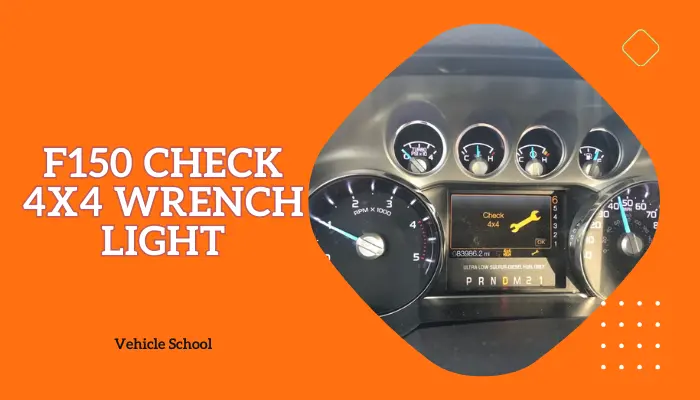It’s disheartening to feel your truck losing power when climbing uphill. It’s a scenario many F150 owners know all too well, and the causes are as varied as the terrain itself.
But you don’t need to start halting your truck up to the dealership yet, though. Continue reading my guide for plenty of good fixes you can try to solve this issue.
Why Does Your F150 Loose Power When Going Uphill?
If your Ford F150 loses power going uphill, it’s due to bad spark plugs, ignition coils, fuel pumps, catalytic converters, throttle body, MAF sensors, camshaft sensors, or vacuum leaks. To fix this issue, you’ll need to swap bad parts or clean them. If the issue persists, a mechanic might need to check the transmission.
You’ll have an easier time preventing the issue if you know the causes in detail, so let’s start with that first.
1. Worn Spark Plugs
Spark plugs wear out because of the heat and chemical reactions happening in the engine.
The metal parts inside the spark plug gradually break down. When you’re driving uphill, the engine needs more power.
Worn spark plugs struggle to create a strong spark, and that leads to an incomplete burning of fuel.
That causes the truck to lose power when under load, like when you’re driving uphill.
2. Bad Ignition Coil
The ignition coil is a key player in your engine’s ignition system, but it can wear out from use.
A worn ignition coil can’t produce a strong spark like it should.
When you’re going uphill and need the extra oomph, such an ignition coil causes misfires, making your truck’s power fluctuate.
3. Weak Fuel Pump
If your F150’s fuel pump is old, dirty, or has electrical problems, it might not be giving your engine the fuel it needs, especially when you’re going uphill.
This causes a lean fuel mixture, leaving your engine without enough juice to perform at its best.
That’s when you’ll feel a noticeable loss of power.
4. Clogged Catalytic Converters
Gunk and debris can build up in catalytic converters, slowing down the flow of exhaust gasses.
This can make your engine less efficient and cause a noticeable power drop when tackling uphill drives, as pressure builds up in the exhaust system.
5. Dirty Throttle Body
The throttle body regulates the air going into the engine. It can get dirty with carbon deposits, losing its accuracy.
Going uphill requires more air for combustion, and a dirty throttle body struggles to provide that.
The result is an imbalanced air-fuel mixture, and poor throttle response, causing power loss, especially during uphill climbs.
6. Bad MAF Sensor
The Mass Air Flow (MAF) sensor measures incoming air for the right fuel injection. If it malfunctions, it gives wrong readings, disrupting the balance.
Going uphill demands precise air-fuel mixtures. A faulty MAF sensor messes this up, leading to reduced power during uphill climbs in F-150.
If the mixture is too lean, the engine can overheat. This increase in engine temperature can trigger safety mechanisms, including the reduced engine power Ford F150 message, as the system attempts to prevent damage.
7. Camshaft Position Sensor Faults
The camshaft position sensor helps the engine time its processes.
If it’s faulty, it disrupts the timing, which is crucial for efficient engine operation.
This disruption causes misfires and power loss when going uphill.
8. Vacuum Leaks
Vacuum leaks happen when air sneaks into the engine where it shouldn’t.
This messes with the air-fuel balance, especially noticeable when climbing hills.
The compromised balance leads to less power and a struggle when going uphill.
9. Transmission Issues
Transmission problems in Ford F150 often pop up due to wear, fluid issues, or mechanical glitches.
As your truck ages, these problems become more noticeable.
Uphill drives, which are already tough on the transmission, can lead to gear slipping or delayed power.
It struggles to transfer the engine’s power smoothly to the wheels.
A good indication of this issue is if your F150 also loses power when accelerating in normal situations or experiences unusual behavior such as going in reverse but not forward.
How To Fix ford f150 loses power going uphill?
Now, time to go through everything that can help you patch up your truck:
1. Replace Spark Plugs
- Get these tools: 14mm or 9/16 spark plug socket, 7mm socket, long extension, vacuum or compressed air, and torque wrench.
- Disconnect the ignition coil. Press the tab and pull the connector.
- Remove the small bolt from the ignition coil with a long extension and a 7-mm socket.
- Lift out the ignition coil and clean debris with vacuum or compressed air.
- Loosen and remove the old spark plug with a 14mm or 9/16 socket.
- If there is no spark plug socket, use a magnet to pull out the old plug.
- For a new spark plug, use a magnet or spark plug socket. Slide it in, turn by hand to catch threads.
- Torque spark plug to 13 foot-pounds.
- Apply a bit of silicone paste to the ignition coil end.
- Slide the ignition coil onto the spark plug, press down.
- Put the 7mm bolt back and tighten snugly.
- Repeat steps 2-11 for other spark plugs.
- Double-check bolt tightness, clean
2. Replace Ignition Coil
Coils come wrapped inside COPs, or Coil On Plugs. Here’s how to switch the coil on a 5.4L F150 engine.
If your engine is different, the wires and hoses might be placed in other spots, but the main steps are still the same.
- Find the old COP and unplug it.
- Use a 7-mm socket to remove the bolt securing it.
- Pull out the worn ignition coil.
- Check for any debris around the spark plug hole.
- Optionally, use silicone paste on the new ignition coil for better protection.
- Insert the new ignition coil and press to lock it in.
- Secure it with the bolt using a 7mm socket.
- Connect the ignition coil connector.
- Repeat the process for the other ignition coils.
- Verify all connections and watch for misfires.
- Test drive to ensure smooth operation after the swap.
3. Swap Out The Fuel Pump
- Secure the fuel tank, ensuring safety.
- Disconnect fuel lines, one white clip, and one red clip.
- Remove tank straps with 13-mm bolts.
- Lower the tank, disconnect the filler neck, and unplug the connectors.
- Soak and remove the rusty lock ring with a punch or pry bar.
- Lift the fuel pump, swap the O-ring, and install a new pump.
- Reconnect fuel lines securely.
- Lift and secure the tank, reconnect connectors, and use straps.
- Reconnect the filler neck, tighten hose clamp, and ensure the seal.
- Reinstall shields or components.
- Turn ignition to “on” to prime the fuel system.
- Check for leaks.
- Start the engine and ensure smooth running.
- Road test to confirm the proper fuel system.
4. Diagnose And Change Catalytic Converter
- Connect the vacuum gauge to the brake booster line.
- Ensure the idle vacuum is 18–22 inches.
- Increase throttle; note vacuum drop.
- If the vacuum stays low, suspect a clogged catalyst.
- Confirm at a higher speed; drops also mean a clogged converter.
- Optionally, trace by removing the oxygen sensor or unbolting the exhaust.
- Improved engine performance suggests a catalytic converter issue.
- Prepare the vehicle, set the parking brake, and jack up front.
- Disconnect the clogged converter, uncouple the exhaust, and remove the O2 sensors.
- Remove metal crosspiece, gearbox mount, and driveshaft.
- Unscrew and remove the old converter.
- Install new O2 sensors in the new converter.
- Install the new converter and tighten the nuts on the exhaust manifold.
- Reattach the gearbox mount, driveshaft, and metal crosspiece.
- Connect O2 sensors, seal junction and tighten bolts.
- Lower the truck using the jack.
- Confirm secure attachments and proper O2 sensor connections.
5. Clean the Dirty Throttle Body
- Get these tools: a 10mm wrench, a slotted screwdriver, a carb cleaner, and rags.
- Remove the shroud and cold air intake tube, and disconnect the wiring.
- Optionally, remove the Flex tube or filter.
- Prop open the butterfly valve with a screwdriver.
- Spray and wipe the throttle body, focusing on the butterfly valve.
- Be gentle to avoid aluminum damage.
- Pay attention to all sides of the butterfly valve.
- Leave the throttle open for 30-45 minutes for the cleaner to evaporate.
- Reassemble, tighten the hose clamp, and reconnect components.
- Start the engine; be patient if the initial run is uneven.
- Do an uphill run after everything’s set.
6. Work On The Dirty MAF
- Get the following tools: a MAF cleaner, T20 Torx tool, and clean cloth.
- Find the MAF sensor in the air intake.
- Unclip and disconnect the sensor.
- Use a T20 Torx to remove screws.
- Gently pull out the MAF sensor.
- Check for dirt and avoid touching.
- Spray the MAF sensor with the cleaner.
- Let the sensor air dry without wiping.
- Put back the MAF sensor and secure the screws.
- Reconnect the sensor and ensure a click.
- Test your truck; check for improvements and warning lights.
7. Put In A New Camshaft Position Sensor
- Disconnect the negative battery terminal for safety.
- Remove the 10mm bolt holding the air intake tube and lift it off.
- Unplug the sensor by pushing down a tab and sliding it off.
- Use a cloth to clean the sensor area, avoiding dirt. Optionally, use air to remove debris.
- Find and remove the 8mm bolt securing the sensor in the cylinder head.
- Gently pull out the old sensor.
- Ensure the O-ring comes out with the old sensor and that the new sensor has one.
- Insert the new sensor, ensuring the O-ring is in place.
- Secure the sensor with an 8mm bolt, tightening it to 89 inch-pounds or 7.4 foot-pounds.
- Connect the sensor plug to the wiring.
- Put back the air intake tube, securing it with a 10mm bolt and tightening it to 80 inch-pounds or 6.67 foot-pounds.
- Reconnect the negative battery terminal.
8. Dealing With A Vacuum Leak
Vacuum leaks can occur in different places and the way you go about fixing them differs based on where they happen.
So, for this guide, I’ll just provide the way to diagnose and tell you what parts to replace when you spot a leak.
- Check for other symptoms like shaky idle, hard starts, or trouble starting.
- Inspect small vacuum lines for cracks.
- Use an unlit propane torch; watch for RPM changes.
- Check the brake booster hose for cracks.
- Pinch the PCV valve hose; note RPM changes.
- Investigate the EGR valve for issues.
- Spray starting fluid on a cold engine; watch RPM.
- Fix the leak by replacing damaged parts such as vacuum lines, gaskets, or valves.
- Test for stable idle and smooth acceleration.
9. Dealing With Transmission Issues
I’d advise getting a mechanic involved for this one.
Repairing transmission issues is very intricate, and I can’t cover everything in this guide.
Reach out to a tech or dive deep into your specific F150 model’s documentation and common transmission problems related to it for a thorough fix.
Ending Thoughts
Well, there you have it! With any luck, the uphill power loss in your Ford F150 is a minor hiccup, not a transmission headache.
Who knows, you might even fix any other potential jerking when accelerating issues.
Go on then, give these fixes a shot, and you’ll hopefully be zipping up those hills in no time.






